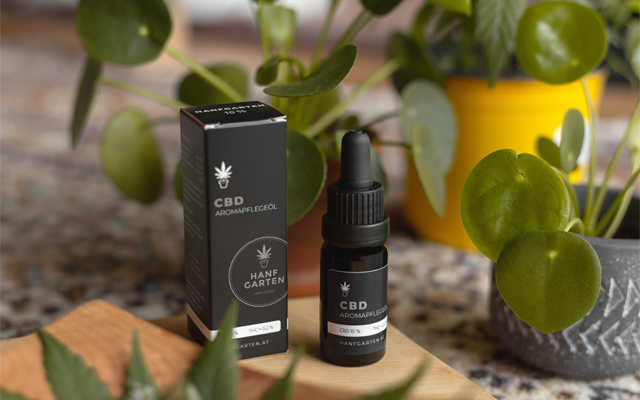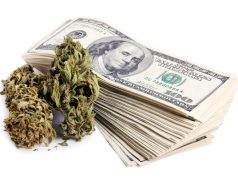Out of 250 supermarkets in the US, 77 of these use private labels which command higher unit shares than the strongest national brand in product categories, according to Harvard Business Law. Additionally, private labels also ranked second or third in 100 of those categories, based on the same report.
As a product manufacturer, private labeling has offered a plethora of excellent opportunities from decreasing competition to increasing profits. Commonly referred to as “generic”, private labels are anything but: sold at lower prices and to compete with brand-name products.
Meanwhile, CBD or cannabidiol has also taken the market industry by storm. This is because many researchers believe that CBD, as one of the many compounds extracted from the cannabis plant, can potentially help with various conditions.
The science and product manufacturing are already there, all you have to do is to focus on your CBD branding. The goal is to demonstrate your work to the public using the right messaging and visuals. And you can do this by starting with your logo.
Things to Consider for Your Branding Strategy
Before we get down to the nitty-gritty of CBD logo branding, there are three things to consider when dealing with the challenges and marketing of CBD branding. According to 99Designs, the following are helpful tips that can assist you if you’re planning your overall branding strategy:
Normalize Your Brand and Product
Cannabidiol is now federally legal, healthy, and medically effective. So whatever difficulties your consumers have about cannabis do not really apply.
To show this, treat your CBD products and branding as you would any other. If your CBD branding acts like Cannabidiol is just like any other medication (which it is), then consumers will follow along. That’s an opening move in setting your branding apart from “recreational drug” associations.
Also, keep in mind that many businesses are now going for private labels. If you’re looking for a manufacturer that would assist in making your branding unique, then perhaps the private label CBD manufacturer, CBD Nationwide, can help you with that.
Always Stick to Your Brand’s Values
Even at times when you’re overcompensating to balance out negative stereotypes, you have to maintain the professionalism required in a pharmaceutical company. Play up your business ethics and put your brand values on full display to demonstrate that you are anything but disreputable.
Related brand narratives or stories regarding how the company was founded are also an effective branding approach for any industry. They are especially effective in CBD companies as it serves as a way to get up close and personal with consumers who have no interest in cannabis products.
Focus on the Specific Type of Product
When it comes to branding, recreational products and medical products have two different approaches to CBD. Both have their own unique directions, so instead of going for both products, choose one and concentrate on it.
Depending on your product, one choice may be more relevant than the other. If your product focuses on the medical benefits of CBD, then stick to that for your branding. But if your product is more applicable for recreational and wellness uses, you can also target consumers the way aromatherapy, health-food, or holistic products do.
Best Practices to Choosing a CBD Logo for Your Private Label Brand
While good branding involves a strong marketing strategy, a solid business plan, and ample advertising, most elements of branding revolve around graphic design. Some of the best practices to choose a good CBD logo for your branding include:
Select Your Design Style
While the US FDA has not provided any clear requirements on labeling and designing CBD products, this doesn’t make CBD products excluded from designing and labeling guidance. In fact, CBD branding somehow coexists with the best cannabis branding rules in general.
All cannabis companies, not just CBD, have to deal with issues like legitimizing and normalizing their products. But since CBD branches off from the rest of the cannabis industry, there are a couple of certain shades to consider.
When it comes to selecting the design style for your branding, there are many various elements that come into play here from shapes, colors, graphics, to typography. Separating each element and what it can do for your logo branding will help you take things one step at a time, instead of getting overwhelmed with the entire design all at once.
When thinking about your logo, the first thing to do is choose the right design aesthetic for your CBD branding. One style doesn’t fit all, as they say, only what is best for your brand.
Pick the Right Type of Logo
Your logo represents your entire CBD brand. It has to express the essence of your brand and communicate what your product is all about through shapes, graphics, type, and color. Regardless of the focus of your brand, your CBD logo should mirror it in a flash.
As Design Powers put it, “a well-designed logo establishes trust and gets customers to stick around. It tells prospective buyers who you are, what you do, and how that benefits them. It communicates to people with no prior experience or knowledge with your business that you do great work.”
Hence, the best fonts, shapes, and colors for your CBD logo design will depend on your brand personality. In brief, 99 designs recommend that hand-drawn imperfections, round lines, and warmer, brighter colors are friendlier, more inviting, and more relaxed. Clean edges, straight lines, neutral, and cooler colors, on the other hand, are more formal and give the impression of effectiveness and professionalism.
Logo design is considered an art form. Never hesitate to seek professional help from an expert to create the perfect logo for your branding. A professional designer can take your brand message and brand values and transform them into a logo that perfectly summarizes your brand.
Pay Attention to Color Scheme
Colors can have loads of different meanings. The psychology behind color is intricate, but to put it simply, colors have particular ideas and emotions attached to them.
Naturally, if you’re focusing on connections to the natural roots of your product, green could be the right choice. This color has by far the strongest associations to cannabis, not only reminiscing the plant itself but also of the “ecological” and “natural” properties that come with organic products.
Then again, if you’re concentrating on the medical route and are attempting to appeal to individuals who have never used cannabis, you might have better luck using the traditional colors of the healthcare industry–white and blue. White suggests virtue and sterility while blue represents a welcoming atmosphere and trust.
Conversely, CBD brands with a lifestyle or wellness route might want to distance their products from the crowd and go to a totally different lane. Soothing pastels, bright, luminous colors, or even edgy and cold shades of black and grey can all work well for various CBD brands with different brand identities.
Remember, in branding and marketing, color psychology emphasizes how colors influence customers’ impressions of a brand and whether or not they convince buyers to make a purchase or consider specific brands.
Thus, there is no clear-cut answer to the question, “Which color is right for you?” as it will depend on certain factors. But to help you decide, let’s take a closer look at this study published at Help Scout:
As per a 2006 study, researchers have shown that the relationship between color and brands links to the perceived appropriateness of the color being used for the specific brand. In other words: Does the chosen color fit what is being sold?
Moreover, the same study discovered that when it comes to choosing the “right” color for a brand, predicting customer reaction to color appropriateness is far more significant than the individual color itself. Therefore, when thinking about the colors to be used for your branding and marketing, ask yourself (or better yet, gather customer feedback): “Is this color appropriate for what I am selling?”
Decide on the Right Typography
When it comes to typography, there are four basic types of fonts you can opt for to give your logo a unique look:
Serif fonts
These fonts have the tiny “feet” at the end of their letters, which make them look somewhat more old-fashioned. They look great with any kind of design and are very versatile, but work especially well with elegant, vintage, or classic designs.
Sans serif fonts
These fonts are perfect for a clean and modern look. They do not have the tiny feet that serif fonts have, which makes them look simple and very sleek.
Script fonts
These fonts are reminiscent of handwriting. From elegant calligraphic fonts to down-to-earth and relaxed scripts, there is a large variety out there.
Display fonts
They are decorative fonts that really catch the eye and are highly stylized.
You can gain very powerful typography when you combine various logo fonts with one another. However, just like your color scheme, your typography must follow your brand’s personality.
Friendly and casual brands can get away with extravagant, even hand-drawn fonts. But if you want to appeal to the wellness niche and you’re targeting more mature markets, an elegant serif font appears more trustworthy and high-end. For more serious, science-focused CBD brands, modern and clean sans serif fonts are a great choice.
Conclusion
However challenging it is to establish a successful cannabidiol brand, the rewards are more than worth it. The CBD industry is novel and booming–meaning the demand is high, and the marketing strategies are still being written.
But before you begin counting your wealth, you need to break into the industry first. The challenge with CBD lies in transitioning antiquated stereotypes and opinions about cannabis, which places a lot of pressure on your CBD branding; not only will you have to stand out from your rivals but also push against preconceived notions about what you are selling. More than other industries, CBD is contingent on branding to create a niche on a vast landscape that did not even exist a few years ago.
Disclaimer: This article is intended for information and entertainment purposes only and is not intended to reflect the specific views of the publication.






